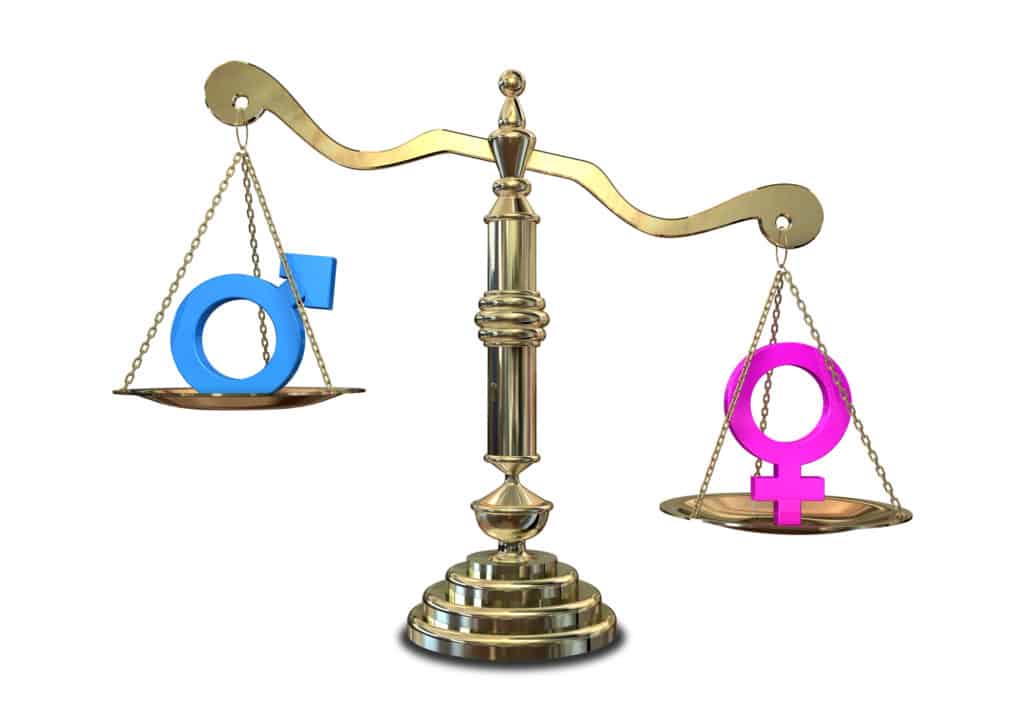
For the second in this series of blogs that focus on how society views the female body, and what impact these attitudes have on women’s health, we address the complex subject of women’s health and gender shaming.
If you didn't get the chance, check out the first one here!
Gender shaming is happening and we see it happen everyday!
If you have been a victim of gender shaming or childbirth trauma, we share some thoughtful tips for recovery and healing.
Let's also explore a phrase which really shouldn't exist - women's shame.
Here are just a few examples of when gender shaming is most obvious - puberty, pregnancy, childbirth, menopause - which all bring new challenges.
More Blogs From Nancy Branberg
How Pelvic Organ Prolapse Can Affect Your Relationship
What Causes Hip Pain In Women And How Can I Get Relief?
How To Regain Your Sexual Confidence After Giving Birth?
Not long ago, rather than celebrating menopause as a form of physical wisdom, people tried to make women feel worthless, washed up, and generally surplus to requirements. The same is true when discussing a woman's monthly cycle.
In some communities, a woman was considered unclean during menstruation and forced to isolate herself. Stigma was also applied when a woman gave birth.
After childbirth, a woman was considered unclean and had to stay in her home for 40 days, during which time she was not allowed to see her baby or have visitors.
It may be difficult to believe that today, gender shaming is still a factor in many women's lives, especially when it comes to female healthcare.
But unfortunately, people often use the concept of shame to control and diminish women, particularly regarding menstruation, their role in birthing and the development of their sexuality.
Shockingly in some communities, men or midwives take over the entire birthing process, believing that the woman giving birth should have no say in how they deliver.
In extreme cases, childbirth is an entirely silent affair, with the mother not allowed to make a sound or take control of interventions and medical treatment during or after labor.
These practices are often pitched as a religious or sacrilegious, but the undertone is still that it would be shameful for women not to be silent.
For instance, the Church of Scientology founder, Ron L Hubbard proclaims that the mandatory silent birth practice that is famously practiced by followers (including Katie Holmes and Tom Cruise) is for the benefit of the child – so words spoken during labor and delivery do not adversely affect them in the future.
He also uses negative adjectives to describe women’s wombs, calling them “wet, uncomfortable and unprotected”.
In tandem, the Church of Scientology of also advocates for completely natural, drug-free birth.
Again, driven by the underlying shameful connotation that it would be wrong for a woman to need assistance during childbirth – even though it’s one of the most painful experiences we’ll ever experience.
Evidence has shown that the effects of shaming from the after-effects of childbirth trauma, could lead to mental and physical breakdowns that women may never fully recover from, unless they seek treatment.
But the shame associated with these events is likely to force the woman to continue to suffer in silence.
Sadly, shame is not isolated to childbirth either, many women who suffer rape or domestic abuse are subjected to shame too.
Are You A Victim Of Gender Shaming?

When you suffer gender shaming, the effects can manifest physically and mentally. The following are signs to look out for:
In extreme cases (if left untreated), women may suffer from a complete mental and physical breakdown leading to self-harm, including alcohol and drug abuse.
The Physical Effects Of Shame

Women's health physical therapy treats disorders affecting the pelvis and pelvic floor.
Women hold stress and anxiety in their pelvis. When you experience gender shame, you may unconsciously hold your breath and tighten your pelvic floor muscles.
Unfortunately, this constant clenching can lead to chronic pain in the lower back and pelvis, urinary incontinence, and much more severe long-term problems.
Yoga, pilates, and other forms of gentle exercise with the supervision of a trained women’s health PT can help to release this tension and allow your muscles to relax.
But the important thing to remember is that you are not alone. Help is available.You can recover from whatever trauma has been holding you back.
How To Heal From Gender Shaming

The first step to recovery is to see yourself (or your loved one) as a victim of circumstance and not as a weak person.
No one deserves to be shamed, no matter their gender.
If you are the victim of gender shaming, it is vital to seek professional help from a physical therapist and/or counselor who can guide you through the healing process.
Physical therapists specializing in women's health can help with the physical manifestations of trauma and shame, and help you recover more quickly.
What is Physical Therapy?

And How Does It Help Women Recover From Shame?
The use of physical exercise and movement to heal the body and mind has ancient origins. The current, up-to-date physical therapy model originated in the 19th century with massage and electrical stimulation to treat patients with paralysis caused by polio and other diseases. But the professional of physical therapy, specifically for women, has grown and developed extensively in recent years. There are now many different types of physical therapists using various healing modalities to help women recover from injuries, manage chronic conditions, and improve their health and wellbeing.
Today, physical therapy is a hands-on profession using a variety of different techniques to help women heal. Dependent on the symptoms and women’s individual set of circumstances, these techniques include:
Exercise and Stretching:
We design exercise programs that are specific to you and your individual needs. Exercise can help to reduce pain, improve strength, and range of motion, and increase strength and endurance.
Massage:
We often use massage to relax muscles and reduce pain. Massage can be particularly helpful in treating women's health issues – brought on by trauma and shame - such as stress incontinence, pelvic pain, and sexual dysfunction.
Electrical Stimulation:
Sometimes we may use electrical stimulation to help reduce pain and inflammation.
Electrical stimulation can also help to improve muscle function. But the electrical stimulation used in physical therapy today is nothing like electric shock therapy used on women in the 19th and 20th centuries for hysteria (hysteria, known in modern medicine as depression). Instead, the electrical impulses are weak, gentle, and used to heal, not harm.
Ultrasound:
Another technique we use occasionally is ultrasound to help reduce pain and inflammation and promote healing.
For example, we treat women with tendonitis, bursitis, or carpal tunnel syndrome with ultrasound treatments. Ultrasound produces heat through a type of sound wave.
This wave is an electrical pulse and simulates recovery when combined with other treatments.
Heat and Cold Therapy:
Heat therapy can relax muscles and relieve pain, while cold therapy can help reduce inflammation. In physical therapy, we use heat and cold to help reduce pain and promote healing.
How Does Physical Therapy Help Women Heal After Trauma?

No two women are the same, and no two recoveries are either. However, physical therapy can be helpful to help women to recover from trauma.
For example, we may recommend and coach you to exercise more vigorously.
Exercise is one of the most effective ways to release endorphins, which have mood-boosting properties.
A regular exercise routine also helps to reduce stress and improve sleep. All of these things are crucial for recovery from trauma.
In cases of trauma, however, there may be physical limitations that prevent you from performing certain exercises.
These include pelvic organ prolapse, c-section scar sensitivity, hypertonic muscles (severe muscle tension), and perineal tearing resulting from traumatic childbirth.
But as physical therapists, we’re trained to take all these issues into consideration and come up with an appropriate exercise program.
How Physical Therapy Helps Women Recover from Gender Shaming

Women have been and continue to suffer shaming for their bodies and their natural processes. Family, community, and even religious leaders often enforce this shame.
As women’s health specialists we use modern techniques to help women recover from the effects of shaming by providing a safe and supportive environment.
We also help to educate women about their bodies and how to care for them in the best possible way, so you can regain your confidence in your body and yourself.
If you are a woman who has suffered from gender shaming - regarding your body or your natural processes or you’re recovering from birth trauma, please know that you are not alone.
We can help you recover from the effects of shame, so you can live a happy and healthy life.
We work with women to help them recover from the effects of shaming by allowing them to love and accept their bodies, first and foremost.
In addition, recognizing abuse is part of our training, so we can support and guide women who have been a victim of gender shaming, rape, and other forms of physical and mental abuse.
We know that it is vital for women to feel comfortable and safe and that it exactly environment we create at Nancy Branberg PT – where there is no shame, no judgment and absolutely no subject or physical symptom is taboo or off-limits.


